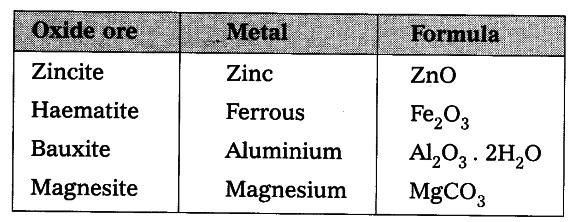1 - Occurrence of Metals
Enroll to start learning
You’ve not yet enrolled in this course. Please enroll for free to listen to audio lessons, classroom podcasts and take practice test.
Interactive Audio Lesson
Listen to a student-teacher conversation explaining the topic in a relatable way.
Introduction to Minerals and Ores
🔒 Unlock Audio Lesson
Sign up and enroll to listen to this audio lesson

Today, we will explore minerals and ores. Can anyone tell me what minerals are?

Are they just rocks that contain metals?

Great point! Minerals are indeed naturally occurring substances that contain metals, but not all minerals are profitable to extract. That’s why we focus on ores, which are minerals from which metals can be extracted profitably.

What's the difference between ores and gangue?

That’s an important distinction! Gangue refers to the impurities such as sand and clay found in ores that need removal during processing.
Types of Ores
🔒 Unlock Audio Lesson
Sign up and enroll to listen to this audio lesson

Now, let's look at the different types of ores. Can anyone name a few?

I think there's oxide ores like haematite?

Exactly! Oxide ores like haematite, which contains Fe₂O₃, are just one type. We also have carbonate and sulphide ores. Who can tell me an example of a carbonate ore?

Isn't calcite a carbonate ore?

Yes! Well done. Knowing the types of ores helps us understand how they are processed for metal extraction.
Gangue and Its Significance
🔒 Unlock Audio Lesson
Sign up and enroll to listen to this audio lesson

Let's discuss gangue. Why do we need to remove gangue from ores?

To get more metal from the ore?

Exactly! By concentrating the ore, we increase the yield of metals. Can anyone suggest a method used for concentrating ores?

I heard about hydraulic washing.

Correct! Hydraulic washing capitalizes on density differences to separate gangue from the ore.
Importance of Ores in Industry
🔒 Unlock Audio Lesson
Sign up and enroll to listen to this audio lesson

Today we'll also touch on the industrial relevance of different ores. Why do you think understanding ore types is important?

Because different metals have different uses?

Exactly! For instance, iron from haematite is vital for construction, while aluminium from bauxite is key in manufacturing aircraft.

So, is that why we study these ores?

Definitely! It’s crucial for everything from designing processes to understanding market demands.
Introduction & Overview
Read summaries of the section's main ideas at different levels of detail.
Quick Overview
Youtube Videos










Audio Book
Dive deep into the subject with an immersive audiobook experience.
Minerals and Ores
Chapter 1 of 1
🔒 Unlock Audio Chapter
Sign up and enroll to access the full audio experience
Chapter Content
• Minerals: Naturally occurring substances containing metals.
• Ores: Minerals from which metals can be extracted profitably.
Detailed Explanation
Minerals are the natural substances found in the Earth that contain various elements, including metals. However, not all minerals can be profitably used for extracting metals. Only those minerals that can yield metals in a sufficient quantity and at a profit are referred to as ores. For example, an ore could be a mineral that contains a high percentage of a metal, making it economically viable to extract.
Examples & Analogies
Imagine going to a grocery store. You may see many fruits (minerals), but only a few, like oranges (ores), are juicy enough to make orange juice profitably. Just like the citrus peels aren't profitable for juice, some minerals don't have viable metal content.
Key Concepts
-
Minerals are naturally occurring compounds that contain metals.
-
Ores are profitable minerals from which metals can be extracted.
-
Gangue consists of impurities that must be removed to increase metal yield.
-
Different types of ores include oxides, carbonates, sulphides, and halides.
Examples & Applications
Haematite (Fe₂O₃) is an oxide ore that provides iron.
Bauxite (Al₂O₃·2H₂O) is a source of aluminium.
Memory Aids
Interactive tools to help you remember key concepts
Rhymes
Minerals shine and ores are fine, gangue is just a dirty line.
Stories
Imagine a treasure hunter who finds a shiny mineral but must sift through the dirt (gangue) to find the gold ore that makes the adventure worthwhile.
Memory Tools
Remember 'O C S H' for types of ores: Oxide, Carbonate, Sulphide, Halide.
Acronyms
MOG to remember that Minerals Occur in Gangue.
Flash Cards
Glossary
- Minerals
Naturally occurring substances that contain metals.
- Ores
Minerals that can be extracted profitably for metal production.
- Gangue
The impurities present in ore that must be removed during processing.
- Oxide Ores
Ores primarily composed of metal oxides.
- Carbonate Ores
Ores that contain metals in the form of carbonates.
- Sulphide Ores
Ores containing metal sulfides.
- Halide Ores
Ores composed mainly of halides.
Key Definitions
- Minerals: Naturally occurring substances that contain metals.
- Ores: Minerals that can be processed profitably for metal extraction.
- Gangue (Matrix): Unwanted materials mixed in ores that need to be removed during processing.
Types of Ores
- Oxide Ores: Examples include Haematite
- Chemical Composition: Fe₂O₃

- Carbonate Ores: Examples include Calcite
- Chemical Composition: CaCO₃
- Sulphide Ores: Examples include Galena
- Chemical Composition: PbS
- Halide Ores: Examples include Rock salt
- Chemical Composition: NaCl
This foundational understanding serves as a stepping stone for studying the metallurgical processes that follow, emphasizing the connection between raw materials and modern metal production.
